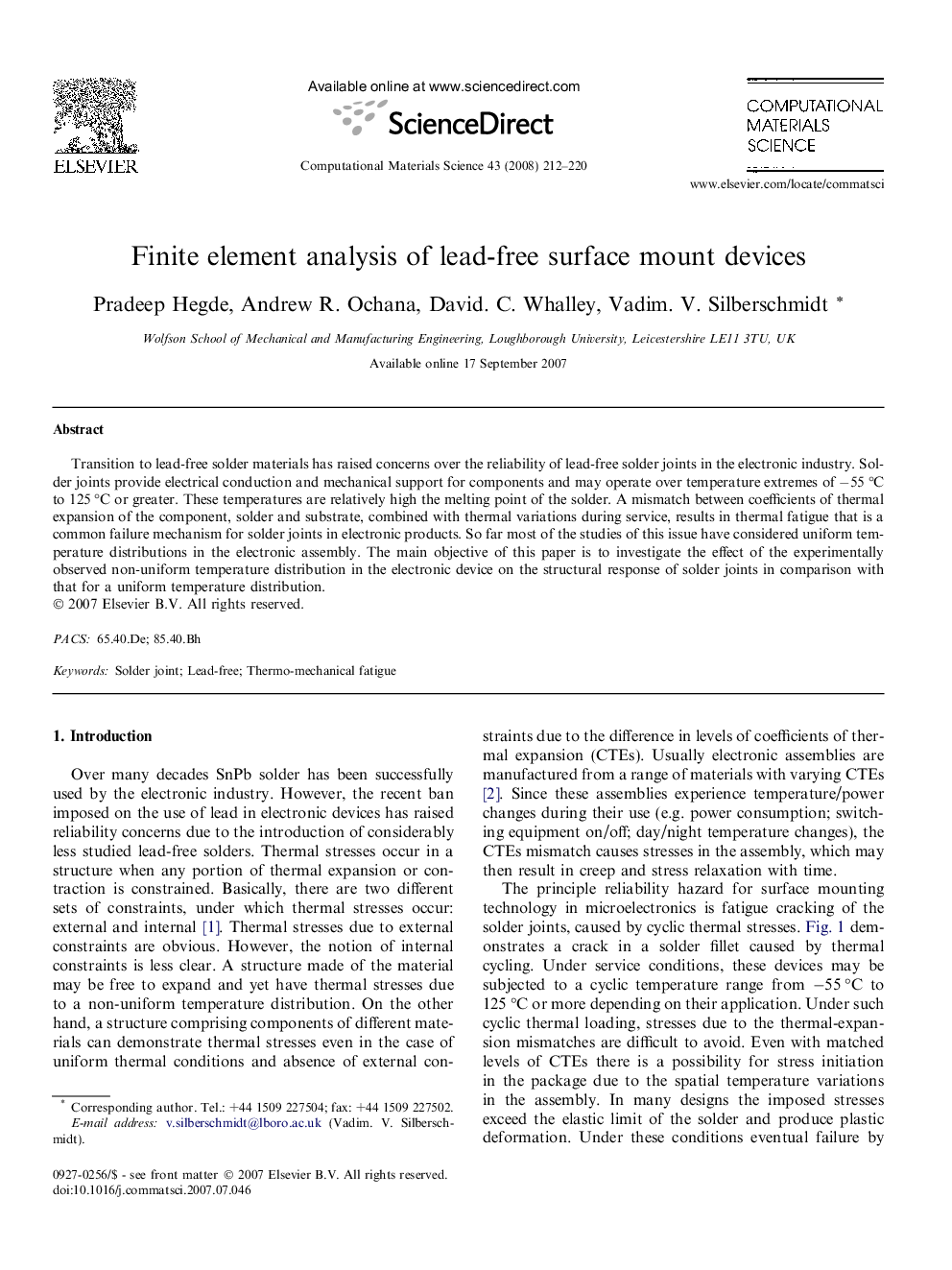| Article ID | Journal | Published Year | Pages | File Type |
|---|---|---|---|---|
| 1563867 | Computational Materials Science | 2008 | 9 Pages |
Abstract
Transition to lead-free solder materials has raised concerns over the reliability of lead-free solder joints in the electronic industry. Solder joints provide electrical conduction and mechanical support for components and may operate over temperature extremes of â55 °C to 125 °C or greater. These temperatures are relatively high the melting point of the solder. A mismatch between coefficients of thermal expansion of the component, solder and substrate, combined with thermal variations during service, results in thermal fatigue that is a common failure mechanism for solder joints in electronic products. So far most of the studies of this issue have considered uniform temperature distributions in the electronic assembly. The main objective of this paper is to investigate the effect of the experimentally observed non-uniform temperature distribution in the electronic device on the structural response of solder joints in comparison with that for a uniform temperature distribution.
Related Topics
Physical Sciences and Engineering
Engineering
Computational Mechanics
Authors
Pradeep Hegde, Andrew R. Ochana, David. C. Whalley, Vadim. V. Silberschmidt,
